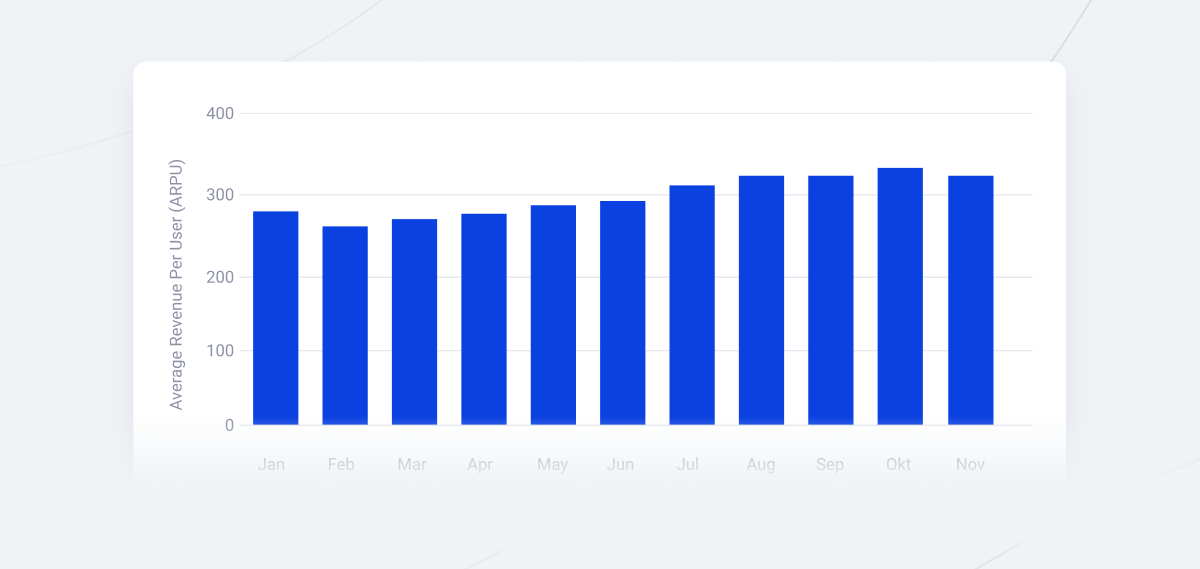What is ARPU?
ARPU, short for Average Revenue Per User, is a fundamental metric used by SaaS and subscription-based businesses to measure the average revenue generated from each active user or customer over a specific period. ARPU provides insight into the revenue efficiency of a company's customer base and helps identify trends in customer value and pricing effectiveness.
 Chart of Average Revenue Per User (ARPU).
Chart of Average Revenue Per User (ARPU).
How to calculate ARPU
Tracking ARPU helps businesses understand how much revenue, on average, each user or customer contributes. This is crucial for evaluating pricing strategies, customer segmentation, and overall business health.
The formula for ARPU is:
ARPU = Total Revenue / Number of Users
Where:
- Total Revenue: The total recurring revenue generated during a specific period (usually monthly or annually).
- Number of Users: The total number of active users or customers during the same period.
For example, if a SaaS company generates $50,000 in revenue from 1,000 users in a month, the ARPU calculation would be:
ARPU = $50,000 / 1,000 = $50
ARPU meaning in SaaS
For SaaS businesses, ARPU is a key indicator of how much value each customer brings on average. Monitoring ARPU over time can reveal:
- The impact of pricing changes or new product offerings
- Shifts in customer segments or usage patterns
- Opportunities for upselling or cross-selling
A rising ARPU suggests that customers are adopting higher-value plans or add-ons, while a declining ARPU may indicate increased discounting, churn among high-value customers, or a shift toward lower-priced plans.
ARPU Benchmarks
Average Revenue Per User (ARPU) benchmarks vary by industry, business model, and target market. However, here are some general guidelines for SaaS companies:
- Low ARPU (< $20): Common for B2C or SMB-focused SaaS with high user volumes and low price points.
- Mid ARPU ($20–$100): Typical for many SaaS businesses targeting SMBs or mid-market customers.
- High ARPU ($100+): Often seen in enterprise SaaS or companies with premium offerings.
Note: Benchmarks can differ significantly based on the product, market, and customer base. Comparing ARPU to similar companies in your segment provides the most actionable insights.
Why ARPU matters
Understanding and optimizing ARPU is essential for SaaS growth. A higher ARPU means more revenue per customer, which can improve profitability, support higher customer acquisition costs, and accelerate growth. Companies can increase ARPU by:
- Upselling and cross-selling additional features or services
- Improving product value to justify higher pricing
- Targeting higher-value customer segments
Conclusion
Average Revenue Per User (ARPU) is a vital metric for SaaS companies to track revenue efficiency and customer value. By monitoring ARPU and implementing strategies to increase it, businesses can drive sustainable growth and improve their bottom line.
To make tracking and improving ARPU easier, consider automating the calculation process. Book a demo of Fenerum
